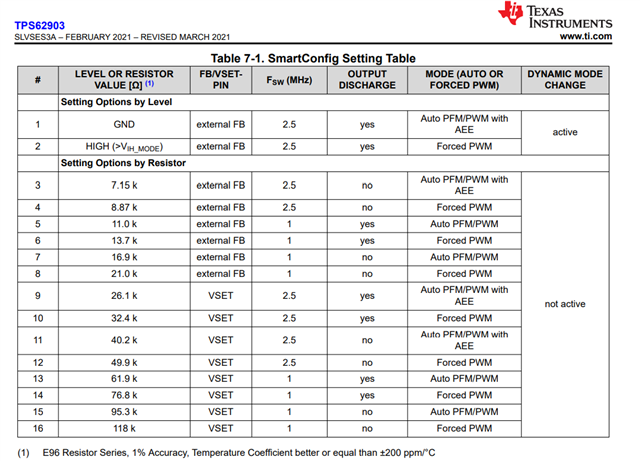Hi Team,
Our customer would like to use TPS62903 as LED driver like the one in Figure 8-80 of the datasheet. They have inquiries as follows;
- Our light product has flash mode, what is the min switch on/off frequency of EN pin?
- The voltage of FB pin can be easily set to lower values than nominal by using the SS/TR pin. What is the min voltage of FB pin? Can we set it to about 10mV?
- Please see the picture at page 10 of the datasheet. If we want to use a 200~400Hz PWM to control the brightness of LED, what should we do?
Regards,
Danilo


 .
.